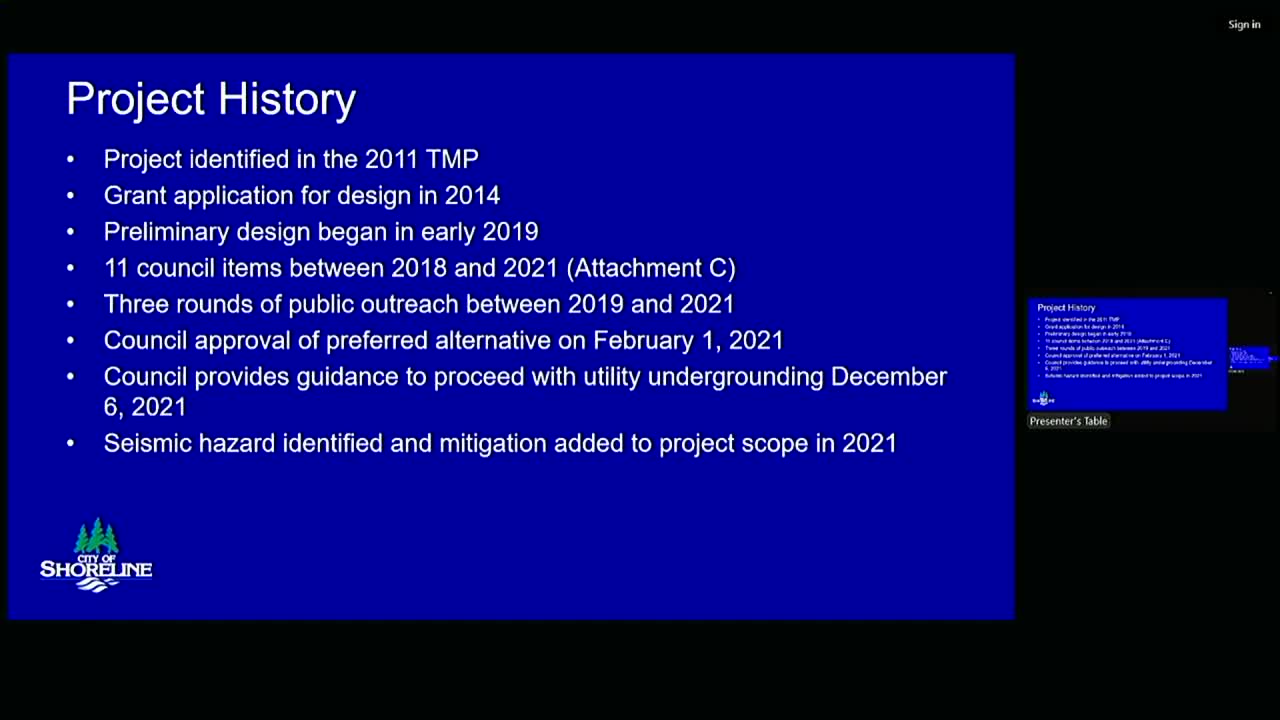Seismic risks prompt major infrastructure overhaul plan
June 03, 2024 | Shoreline, King County, Washington

This article was created by AI summarizing key points discussed. AI makes mistakes, so for full details and context, please refer to the video of the full meeting. Please report any errors so we can fix them. Report an error »

In a recent government meeting, officials outlined significant developments regarding the 175th corridor project, which aims to enhance infrastructure and address seismic risks in the area. The project, extending from Midvale to Interstate 5, is set to enter its construction phase in 2025-2026, with multiple future phases planned as funding becomes available.
Key components of the first phase include seismic mitigation efforts, installation of a new signal system at the intersection of 175th and Meridian, and various Americans with Disabilities Act (ADA) improvements such as sidewalks and curb ramps. Additionally, the project will introduce shared use paths and bike lanes, contributing to a broader bike plan that aims for continuous lanes between 145th and 205th streets.
A critical aspect of the project is the seismic hazard identified through geotechnical investigations, particularly concerning peat and alluvium under the roadway. Officials noted that in the event of a significant seismic event, the roadway could experience liquefaction, leading to potential utility damage and environmental risks, particularly to Ronald Bog. To mitigate these risks, the project will involve excavating existing fill and replacing it with lightweight cellular concrete, designed to withstand seismic activity.
The project has received substantial financial support, including an $8.8 million grant from FEMA, which covers 75% of the additional costs associated with seismic vulnerability. This funding is crucial for ensuring the safety and resilience of the infrastructure, which serves a community of approximately 8,000 residents.
As the project progresses, officials emphasized the importance of community engagement and transparency, indicating that further details will be shared with residents as plans develop.
Key components of the first phase include seismic mitigation efforts, installation of a new signal system at the intersection of 175th and Meridian, and various Americans with Disabilities Act (ADA) improvements such as sidewalks and curb ramps. Additionally, the project will introduce shared use paths and bike lanes, contributing to a broader bike plan that aims for continuous lanes between 145th and 205th streets.
A critical aspect of the project is the seismic hazard identified through geotechnical investigations, particularly concerning peat and alluvium under the roadway. Officials noted that in the event of a significant seismic event, the roadway could experience liquefaction, leading to potential utility damage and environmental risks, particularly to Ronald Bog. To mitigate these risks, the project will involve excavating existing fill and replacing it with lightweight cellular concrete, designed to withstand seismic activity.
The project has received substantial financial support, including an $8.8 million grant from FEMA, which covers 75% of the additional costs associated with seismic vulnerability. This funding is crucial for ensuring the safety and resilience of the infrastructure, which serves a community of approximately 8,000 residents.
As the project progresses, officials emphasized the importance of community engagement and transparency, indicating that further details will be shared with residents as plans develop.
View full meeting
This article is based on a recent meeting—watch the full video and explore the complete transcript for deeper insights into the discussion.
View full meeting
